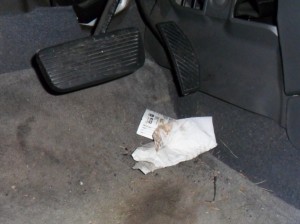If you look at your owner’s manual, the term ‘wear and tear’ pops up a few times. Wear and tear affects leasing, trade-in value, tire warranties and replacement, and warranty coverage, so it is a good idea to understand it fully. Naturally, vehicles are going to experience a degree of wear, but when does it become a problem? Hatfield Toyota discusses wear and tear.
Determining Wear and Use
Toyota Financial has a table to assist leasing consumers with evaluating normal and excessive use of a vehicle. The following list includes examples of excessive wear.
- Any damage to the seats or trim larger than a credit card, and multiple damaged locations
- Missing parts and/or accessories
- Any modifications or improperly installed equipment personally installed or at another location that is not the dealership
- Body scratches larger than the size of a credit card
- Scratched/dented bumper(s)
- Bald or damaged tires
- Damage or missing wheels
- Broken or damaged glass surfaces and accessories
- Scratched body panels
- Poor body work
- Damage to factory tint or installed aftermarket tint
- Missing/damaged mirrors, lamps, or signals
What are the Consequences of Excessive Wear?
Excessive wear and tear will present a number of issues when you visit the dealership.
- Reduces car’s trade-in value
- Increases the number of service and maintenance trips you will have to pay for
- May affect certain warranty coverages
- Leasing company will charge for excessive wear, damage to the vehicle, and aftermarket modifications
The dealership team will ultimately be the ones determining wear and tear. The above table gives you insight into the process.






